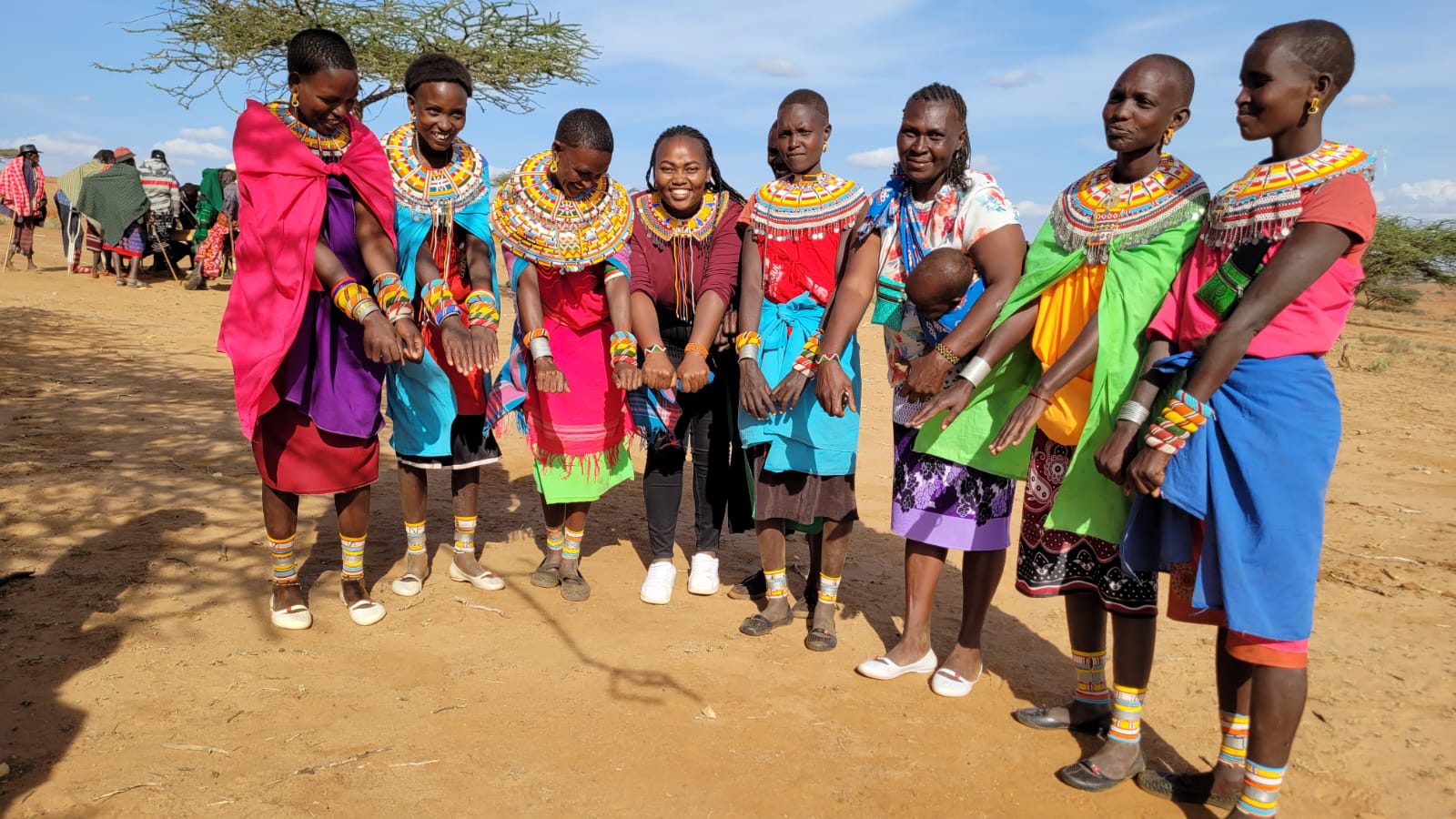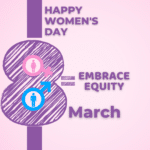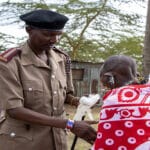As The Girl Generation rolls out across selected counties in Kenya, and regions of Somaliland, Senegal and Ethiopia, we’re introducing members of our team, and inviting them to tell us about their work on the programme. In this interview, we meet Teresiah Warui, who works for ActionAid in Kenya
What’s your role on the programme?
I work closely with project coordinators in our focal counties of Garissa and Isiolo, to implement the programme at the grassroots level. This allows me to understand all the activities that we need to do, involve the community (especially the girls and women), and see where we need to get to, in terms of ending FGM/C.
And the reason why I do this work? I love working with girls and women. When you’re seated in an urban area, you will hear ‘Oh, there is too much [focus] on the girl child’. But I can confidently say: we are not yet there. Because there is still a girl who is being forced into marriage at ten years old. They don’t even have a choice, they just wake up, they are ten, the parents take them through FGM/C, and the next thing they hear is ‘We’re sending you to this-and-this home, to this man. You are going to be married there. So there is no coming back home. You are ten! You can’t make a decision. You don’t know any other world apart from the world that’s around you.
So, what really motivates me is having the opportunity to impact the lives of girls. Education is their right. Them having a right over their bodies is their right, because when people cut them, no one asks them, ‘Should I cut you or not?’ If you have sessions with some of the survivors of FGM/C, they will let you know, some of them were completely not ok with that.
Can you describe AA’s approach at the community level?
We use the human-rights-based approach. We believe that instead of giving the community what you think they need, let it come from them. Sometimes they may not be aware that the poverty around them is because of the systems that have been set, so we make sure that we enable the community to understand their rights. It may be through capacity building. It may be through a series of community dialogues, or intergenerational dialogues, meeting as the whole community. When people understand and realise what their rights are, then they will go and start championing their rights, in their homes and at the government level. That is what we do.
When you start engaging a community, is there an existing understanding of human rights? Or any pushback against the concept?
It’s interesting. I will give an example of a community we work in. It’s a community that said that they’ve never had people come to them to address FGM/C. My colleague was standing and speaking to them, and I remember that when she touched on women’s rights, the women clapped. The men were seated separately. They won’t accept sitting together with women due to cultural beliefs. But when she talked about how women are underserved in their communities and started to unpack it, the women started clapping. These women have just been in a system where no one complains about anything. This could also be a result of women being forced into marriages at very early ages of 10 to 12 and don’t understand what their human rights are.
For me, what that means is that women are aware. Women see all these things, but the systems in their cultural requirements tell them, that they are there to serve a man and the community. Women are seen and not heard.
So the community is not rejecting it – it depends on how you approach it. The essence of it is helping them understand their context.
For me, it depends on how you approach the community. You have to start from where they are and meet them at their level. Not even halfway: where they are. Let us meet there. And then we start elevating. If you come with ‘Oh, we want to change, you guys are doing things wrong’, they don’t really understand. You have to take them through a process, it’s a journey. And one has to start by understanding their contexts. A good place to begin unpacking gender norms is through the day-to-day lives of men and women in their communities. What they do and what they don’t. This begins to open their eyes. And you are not the one who is going to tell them to change. They will start changing by themselves.
Tell me about how Kongmanos work?
It starts with mobilisation. We let the women’s rights networks and the local leaders take the lead. We only share the requirements for the Kongamanos such as selecting participants from every location. This allows people from different areas to get first-hand information to pass on to others. Kongamanos allow people to come together and discuss community issues. For us, the objective is to discuss FGM/C and change attitudes regarding the practice.
One time we went to a community for a kongomano, and one of the facilitators told me, ‘You know what you’ve done here is very important. Because you’ve just brought to them what they’ve never seen. So the effect of this, the 130 people who’ve gathered here, is that they’re going to use this as their morning greeting, the fact that they’ve spoken about FGM, the fact that they’ve gathered for the first time, it’s going to be the news for the next two weeks!’ So every time they meet each other, wherever they go, they will be like ‘Oh were you in this meeting?’
Do you facilitate these discussions?
No, the local people facilitate. I can’t do it. It’s their community. We have trained women’s rights networks on facilitation skills and provided them with tools. The facilitators speak the local language. To spearhead the discussions, we have case studies that resonate with participants for example ‘Maria is this girl who doesn’t go to school.’ They will discuss it then come back and tell you, this is what we see, this is how this girl is deprived of her rights. So they’ve already started seeing it from different perspectives. Then we come back to the issue of human rights and women’s rights, and they go back home thinking, oh, actually people have their rights, and these are the inequalities that are existing. The facilitators are also equipped to lead discussions on FGM/C and unpacking it; what is it? Why do we do it? What are the drivers and beliefs around FGM/C?
And then once they understand that then you come to the fact that we want to discuss the [perceived] benefits of it. Some of them will argue that it reduces women’s sexual arousal. But then you ask them: fine – but how many girls who’ve not gone through FGM/C are still doing well, have gone to school, and are helping their families? So you see – by the time you’ve got there, everyone is already thinking, re-thinking – and you start having men who say, ‘I don’t think I will allow my little girls to go through the same actually. I see it.
And with the facilitators, they are so good in creating the picture in the men’s minds. Because most women know [what FGM is]. It’s the men [who don’t]. They will come with their flip chart, draw [FGM] for them, and at the end, they are like eh-eh [no, no]: I don’t want this thing to be done to my girls. And some of them will reject it.
Presumably, at that point, not everyone is convinced about ending FGM/C?
Absolutely. At the same meeting, we encourage the facilitators to let the community learn from each other and respond to each other. If someone is not convinced, we don’t need to be the ones telling them. We now want their peers to tell them. You will not actually convince everyone. But in the end, some will go and think for themselves. But whatever happens, whether they are convinced or not, you want them to know everything that is needed to actually report a case [of FGM/C], to manage a case, and who is supposed to be responsible for it. We also encourage the participants to share the information they have learned with others at home and around them.
We know that the communities you work in face a lot of challenges, such as food and water shortages, and poverty. How do you make FGM/C relevant to people given their other pressing priorities?
It’s important to understand their daily structures. Sometimes chiefs gather them, maybe to talk about peace in their community. To make this relevant, we understand their structures, which days they go to the market, and what time are they comfortable. Once the community is ready, they get to select the time, they will show up. At some point, we’ve had to cancel meetings if there are peace concerns, and we understand that that’s a priority issue. And you let them handle it until they’re ready to have this conversation. So you don’t push them, you just work with their structures.
Another thing: sometimes you find that the communities we work with don’t even have health facilities. Sometimes they may be going through challenges. For one meeting we did, I remember we spotted a baby who was carried by its mother. The baby was one and a half years old and it was undernourished. So we had to find out really quickly: is there a programme within the ActionAid office that is actually addressing drought? And can we connect the mother with it, and see if she can benefit from nutritious things like baby porridge? And that’s how she benefited.
I remember one time that we brought women from those hard-to-reach areas to Isiolo town. Someone asked, why do you need to take a woman from the village, and bring her to town? To be honest and fair, not all meetings that are taken to the hotel are a loss. If you are doing proper training, you need to get them from their homes. Because if they’re in their homes, they are thinking about how they are going to take care of their husbands, take care of their kids, and take care of their animals. And take care of all their unpaid care work. But then when they came, they said, I can’t remember the last time I slept like this! And so all the meetings that are set to happen in a hotel, are not for a loss. It even helps expose these women ‘to new things’. Some of them had never even seen tarmacked roads. And that experience is game-changing. When they go back to their communities they say ‘Wake up! We’re the ones who cannot see the world’.
I always say the future is here, it’s just unequally distributed. So making it a priority to understand their community contexts is important.



